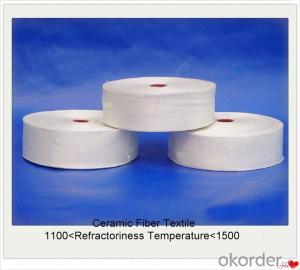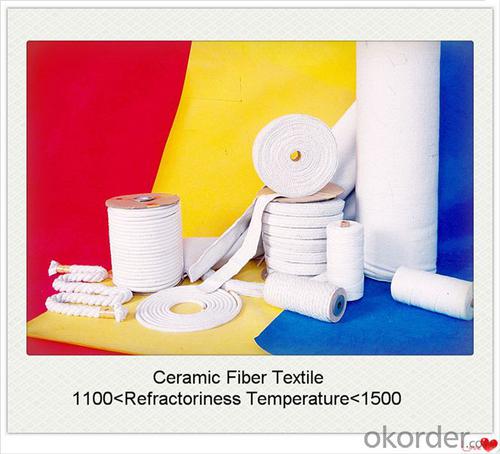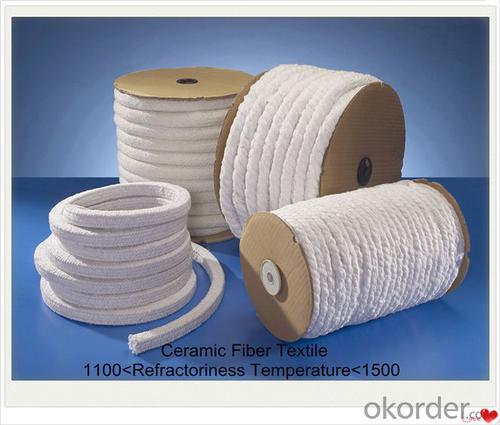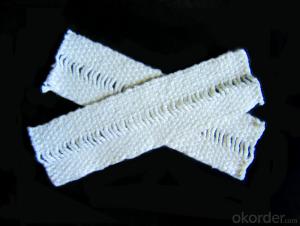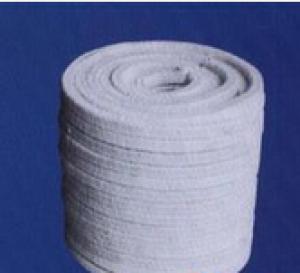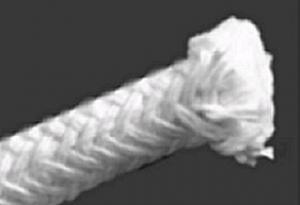Ceramic Fiber Textiles:Cloth, Tape, Rope & Yarn
- Loading Port:
- Qingdao
- Payment Terms:
- TT or LC
- Min Order Qty:
- 1000 kg
- Supply Capability:
- 300000 kg/month
OKorder Service Pledge
OKorder Financial Service
You Might Also Like
Ceramic Fiber Textiles Such as Cloth Tape Rope and Yarn
General Information of Ceramic Fiber Textiles 1260 STD
1. Ceramic Fiber Textiles such as Cloth, Rope and Tape is a woven fabric made from our high quality ceramic fiber woven yarn. The cloth is reinforced with fiberglass filament, or optional Inconel/alloy steel wire reinforcement.
2. Ceramic fiber textiles (cloth, tape and rope) contain a certain amount of binder material which is normally burned at lower temperature and does not affect the insulation property.
3. It is featured with heat insulation and high temperature protective materials in all kind of thermal installations and heat-conducting systems, widely used in welding, foundry works, aluminum and steel mills, boiler insulation and seal, shipyards, refineries, power plants and chemical plants.
Typical Applications of Ceramic Fiber Textiles 1260 STD
Heat insulation furnace curtain, large area thermal insulation.
Radiant heat shielding, flexible fabric expansion joints for high temperature piping.
Safety blankets, welding blankets, protective and insulating covers, gaskets, cable or pipe wrapping, etc.
Application of Ceramic Fiber Textiles 1260 STD
Lightweight and low thermal conductivity.
Excellent insulation at high temperature.
Resists corrosive chemicals, commonly used acid and alkali.
Strong and abrasive. It can be used in tough environment.
Good substitute of asbestos products in many insulation and sealing applications.
Reinforcing material: glass fiber wire, stainless steel wire, glass fiber and stainless steel wire.
Images for Ceramic Fiber Textiles 1260 STD





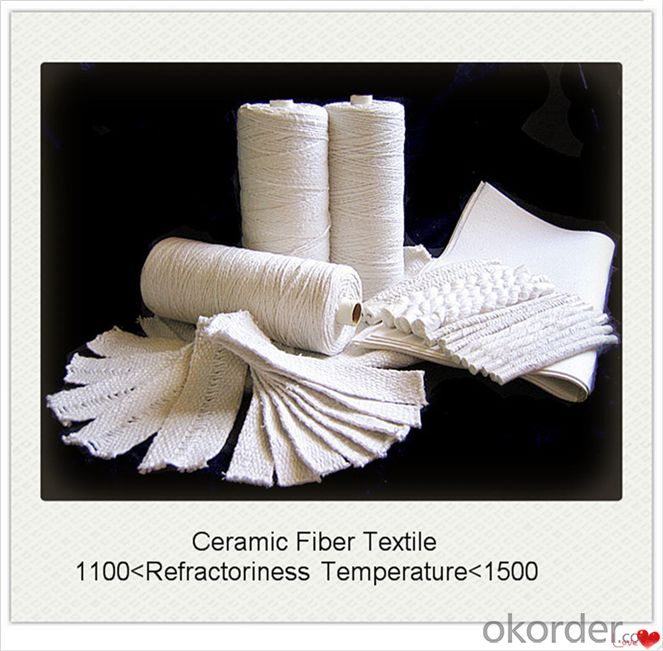

Technical Data for Ceramic Fiber Textiles, Cloth and Tape


Why Us
1. Strong professional:
We are state-owned company, ranking 267th/Fortune Global 500. We have clients from over 160 countries and wholly-owned overseas subsidiaries and branches in 10 countries.
Our company has thirty years producing experience in refractory product. Our manager will supervise on a various refractory’ s production materials, process control, quality supervision and package delivery,and ensure the products are 100% qualified.
2. Annual supply:
Our company has passed ISO9001 quality management system certification and SGS certification. And the annual supply of shaped and unshaped refractory product is 28,800-35,000 tons..
3. Annual exports:
Now we have gained a global sales network reaching Taiwan, Russia, Mongolia, South Korea, Vietnam, Pakistan, Bulgaria, Finland, Greece,Spain, Congo, Angola, South Africa, and Maldives,Jordan and so on.
4.Production equipment:
Production and testing equipments are new, complete and automated or semi- automated. Such modern facilities and equipments have provided the fine technical guarantee for the production and testing.
5. Testing equipment;
Our company’s testing equipments as follows:
High Temperature RUL Tester
Bulk Density Tester
The Pressure Tester
Refractoriness Tester
FAQ
Q1:Are you a manufacture or trader?
A:Factory+trade(mainly factories, at the same time,we operates other related products).
Q2:Can we visit your factory?
A:Sure,welcome at any time, seeing is believing.
Q3:What's the MOQ of trial order?
A:No limit,We can offer the best suggestions and solutions according to your condition.
Q4:Which payment terms can you accept?
A:T/T,L/C are available for us.
Q5:After an order is confirmed, when to deliver?
A:15-25days after deposit.
Q6:Is your company accept customization?
A:We have own factory and excellent technical team,and we accept OEM service.
Q7:How about your company's certification?
A:ISO9001 and Test Report,also we could apply other necessary certification.
Q8:How to slove the quality problems?
A:If the products are not confirmed to customer samples or have quality problems,our compay will be responsible to make compensation for it.
Q9:Can you offers samples?
A:Of coures,samples are free but freight paid by the buyers.
Q10:What is the service life of your products?
A:The service life of different bricks is unlike.It also depends on your using condition and method.
- Q: Is aluminum silicate fiber completely insulated from heat transfer?
- Fire-resistant insulation layer is used to make ceramic fiber module insulation, thermal insulation thickness of four hundred mm, the ceramic fiber blanket double extrusion, ceramic fiber module in parallel sorting, the trolley furnace wall temperature to plate temperature rise of forty-five degrees, which is almost a best isolation effect.
- Q: What is the function of (ceramic) ceramic powder?
- In the process of porcelain fused to metal (PFM), the powder material used for sintering and making ceramic restoration is made. There are long stone and alumina ceramic powder, as well as a variety of crystal reinforced porcelain powder, high temperature porcelain powder and low temperature porcelain powder.
- Q: Is everybody's ceramic fiber cloth poisonous?
- Ceramic fiber products with excellent heat resistance, with heat-resistant alloy reinforced aluminum silicate dimensional textiles, continuous use temperature of 1000 degrees, excellent acid resistance and oil, water vapor corrosion capacity.
- Q: Can ceramic fibers be spun?
- The utility model can also achieve higher strength by increasing metal wire reinforcement, and finally can be made into products such as yarn, cloth, belt, rope, packing, etc., and the utility model has wide application.
- Q: What are the uses of ceramic fiber blankets?
- The ceramic fiber blanket has a strong resistance to wind erosion, and can be directly contacted with flame and high-speed airflow. Because of its excellent fire resistance, high temperature stability, high thermal shock resistance, low heat capacity and high temperature conditions, high compressive strength.
- Q: What are the differences between digital textile printing ink and printing ink?
- 1. heat transfer ink:Transfer printing for polyester, nylon and spandex fabrics;2. active ink:Suitable for direct spray onto pure cotton, silk, nylon and other fabrics;
- Q: What are the man-made fibers polluting the environment?
- Fiber (Fiber): a fine, soft filament formed by certain mechanical processes (traction, stretching, shaping, etc.) of a polymer. Fiber has a large elastic modulus, small deformation, high strength, high crystallization capacity, small molecular weight, usually tens of thousands of.
- Q: The difference between ceramic fiber cloth and ceramic fiber paper
- 1. appearance. The ceramic fiber cloth has an obvious grid like appearance, and the ceramic fiber paper is very few or even mesh like.2. density. The density of ceramic fiber paper is greater than that of ceramic fiber cloth.3. thickness. Ceramic fiber paper, the thinnest can do 0.5mm, ceramic fiber paper can not do so thin, generally thin, there are also 2mm.4. stand erect. Ceramic fiber paper can be like in our life that can be placed on the A4 paper, mold, stand up. Ceramic fiber cloth is like the fabric used in our 5. lives. It's soft and doesn't stand upright.6. tear resistance. The toughness of the ceramic fiber paper is not as good as that of the ceramic fiber cloth.
- Q: Which is better, ceramic fiber or spray velvet?
- Different applications of two kinds of ceramic fiber cotton:In 1, production of HLGX ceramic fiber module: rejection due to thick and long silk fiber is better than spraying silk carpet, in the block made of the folding process, blowing fiber blankets easily broken and torn, and thrown silk fiber blanket can be folded very closely and not easy to damage, the quality will directly affect the block lining quality;The vertical layer 2, large boiler insulation blanket shop carpet fiber application: rejection due to long and thick, has better tensile resistance, more durable, so the rejection is better than spray carpet carpet;3, application of ceramic fiber textile, silk fiber thick and long and has good spinnability, the ceramic fiber thrown silk became the production of ceramic fiber textiles (cloth, tape, rope, pipe and other special materials);
- Q: Does the component of textiles contain 70% acrylic? Does it hurt the body?
- Acrylic may sound strange, because it is a new word that has appeared on the mainland in the last two years. It was not until 2002 that the advertising industry, furniture industry and handicraft industry were gradually understood by a few. "Acrylic" is a transliteration of foreign words, English is ACRYLIC, it is a chemical material. The chemical name is called "PMMA", which belongs to propylene alcohol, commonly known as "specially treated organic glass". In the application industry, its raw materials usually appear in the form of particles, plates, pipes and so on.
Send your message to us
Ceramic Fiber Textiles:Cloth, Tape, Rope & Yarn
- Loading Port:
- Qingdao
- Payment Terms:
- TT or LC
- Min Order Qty:
- 1000 kg
- Supply Capability:
- 300000 kg/month
OKorder Service Pledge
OKorder Financial Service
Similar products
Hot products
Hot Searches
Related keywords



